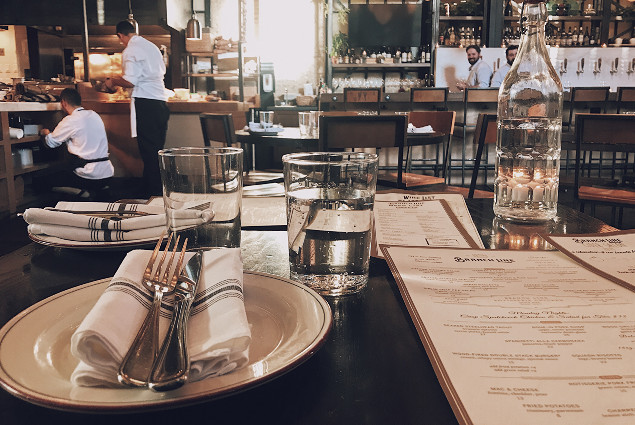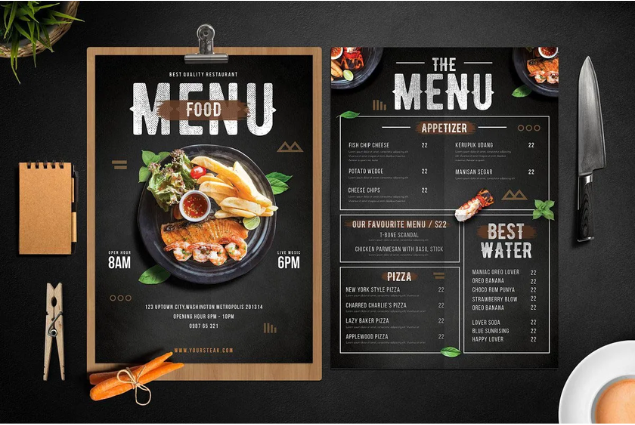Crafting an enticing and effective menu involves more than just listing down what your establishment offers. It is a strategic tool that, when used correctly, can influence your customer’s decisions and boost your sales.
This article will delve into the psychology of menu choices, explain concepts like ‘Paradox of Choice’ and ‘Priming Effect’, and provide tips on how to use this knowledge in designing a compelling menu display.
Understanding the paradox of choice
The Paradox of Choice is a concept put forth by psychologist Barry Schwartz, suggesting that while some choice is undoubtedly better than none, more is not always better than less.
Applying this to a menu board context, offering too many options can overwhelm customers and make the decision-making process stressful, which could lead to decreased satisfaction. For example, a study found that when a grocery store offered samples of 6 different jams, they had ten times more sales than when they offered 24 samples.
The trick is to strike the right balance. Offer enough variety to cater to different tastes, dietary needs, and preferences, but not so much that it paralyzes decision-making. Aim to provide a range of choices but in a limited number, perhaps 5-7 options per category.
The priming effect
Priming is a psychological phenomenon in which exposure to one stimulus influences the response to another stimulus.
In terms of menu boards, priming can be achieved through the strategic use of images, descriptions, and the order in which items are listed. High-quality images of dishes can stimulate the senses and make those items more appealing. Detailed, appealing descriptions can do the same. For instance, describing a dessert as ‘decadent Belgian chocolate cake’ can be more enticing than simply ‘chocolate cake.’
Similarly, the order of items can also have a priming effect. People often remember the first and last items in a series best, known as the ‘Serial Position Effect.’ So, place your high-profit or signature dishes at the beginning or end of a category to make them more memorable.
Positioning high-profit items
Strategically positioning high-profit items on your menu can help steer customers towards these selections, ultimately increasing your revenue.
High-profit items should be given prominent positions on the menu. As per the ‘Golden Triangle’ theory, customers’ eyes naturally go to the top right corner of the menu first, then to the top left, and then to the center. Placing high-profit items in these areas can help draw attention to them.
Also, you can draw attention to these items using boxes, icons, or different colors. For example, a small “Chef’s Special” icon next to an item can make it stand out and feel special.
Using descriptive labels
Descriptive labels can influence customers’ perceptions of a dish, making it sound more appealing, and can justify a higher price.
A menu item labeled as ‘succulent grilled chicken breast with a lemon herb drizzle’ sounds more appetizing and worth paying a little extra for than simply ‘grilled chicken.’ Moreover, labels that hint at the origins of a recipe, such as ‘Grandma’s Favorite Apple Pie,’ can evoke nostalgia and warmth, making the dish more appealing.

Leveraging price anchoring
Price anchoring is a psychological pricing strategy where the price of one item affects how a customer perceives the price of another item. It’s a powerful tool when used correctly and can significantly impact your menu’s profitability.
Here are more tips and tricks to make the most out of this strategy:
- Decoy pricing: You can include an expensive ‘decoy’ dish on your menu. This dish might not sell in high volume, but its purpose is to make other less expensive but still high-profit dishes seem more reasonable.
- Bundle pricing: Offer bundles or meal deals where customers can get a group of items for a price that seems less than buying individually. By anchoring the price of individual items, the bundled price appears to be a great deal.
- Comparison pricing: Place a higher-priced item next to a similar, lower-priced one. The higher-priced item serves as an anchor, making the lower-priced item seem like a bargain.
- Subtle price increases: If you need to raise prices, do so subtly and gradually. A sudden, significant price increase might cause customers to reconsider, but a small increase is less likely to be noticed, especially when anchored against the memory of the previous price.
- Remove the currency symbol: Studies have shown that removing the currency symbol from prices can lead to increased spending. When customers see a price without a currency symbol, they’re less likely to anchor the price to their preconceived notions about cost.
- Price precision: Consider using precise numbers rather than rounding prices to the nearest dollar. For instance, price an item at $9.97 rather than $10.00. The odd pricing makes the price appear carefully calculated and gives the impression of value.
Remember, the goal of price anchoring isn’t to trick or deceive customers but rather to guide their perception of value and help them make decisions that lead to a satisfying dining experience.
Utilizing menu layout and design
The layout and design of your menu can also significantly influence customers’ choices. Paying attention to visual cues, color psychology, and typography can help guide customers’ eyes toward the dishes you want to promote. It is essential to master the art of product placement to maximize restaurant sales.
As discussed earlier, the ‘Golden Triangle’ is a useful concept to follow when designing your menu layout. Also, using dividers or boxes to highlight special dishes can draw attention to them. Color and typography can also influence perception and choices. Warm colors like red and yellow can stimulate appetite, while cool colors like blue and green can be calming and refreshing.
Additionally, the font used for each item can also play a role. Bold or larger fonts can draw attention to particular items, while fonts that are difficult to read might discourage customers from ordering those dishes.
Balancing variety and complexity

The variety and complexity of your menu can also influence customers’ choices and satisfaction. It’s essential to find a balance that suits your establishment and clientele.
While variety can attract a broader range of customers, it’s essential to avoid making your menu too complex. A complicated menu can be intimidating and slow down the ordering process. It might also lead to operational difficulties in the kitchen.
A simple solution is to offer a range of base dishes with options for customization. This allows customers to tailor their meals to their preferences without overwhelming them with too many choices.
Conclusion
In conclusion, designing an effective menu board is a strategic process that involves understanding human psychology and using this knowledge to influence customers’ choices. Concepts such as the ‘Paradox of Choice’ and ‘Priming Effect,’ strategic positioning of high-profit items, using descriptive labels, price anchoring, and careful attention to menu layout and design can all help to create a compelling menu display that enhances the dining experience and boosts sales.
If you found this article helpful and want to expand your knowledge about other aspects of boosting sales for your business, check out the website. Learn more about marketing furniture, its design, placement, and much more.

